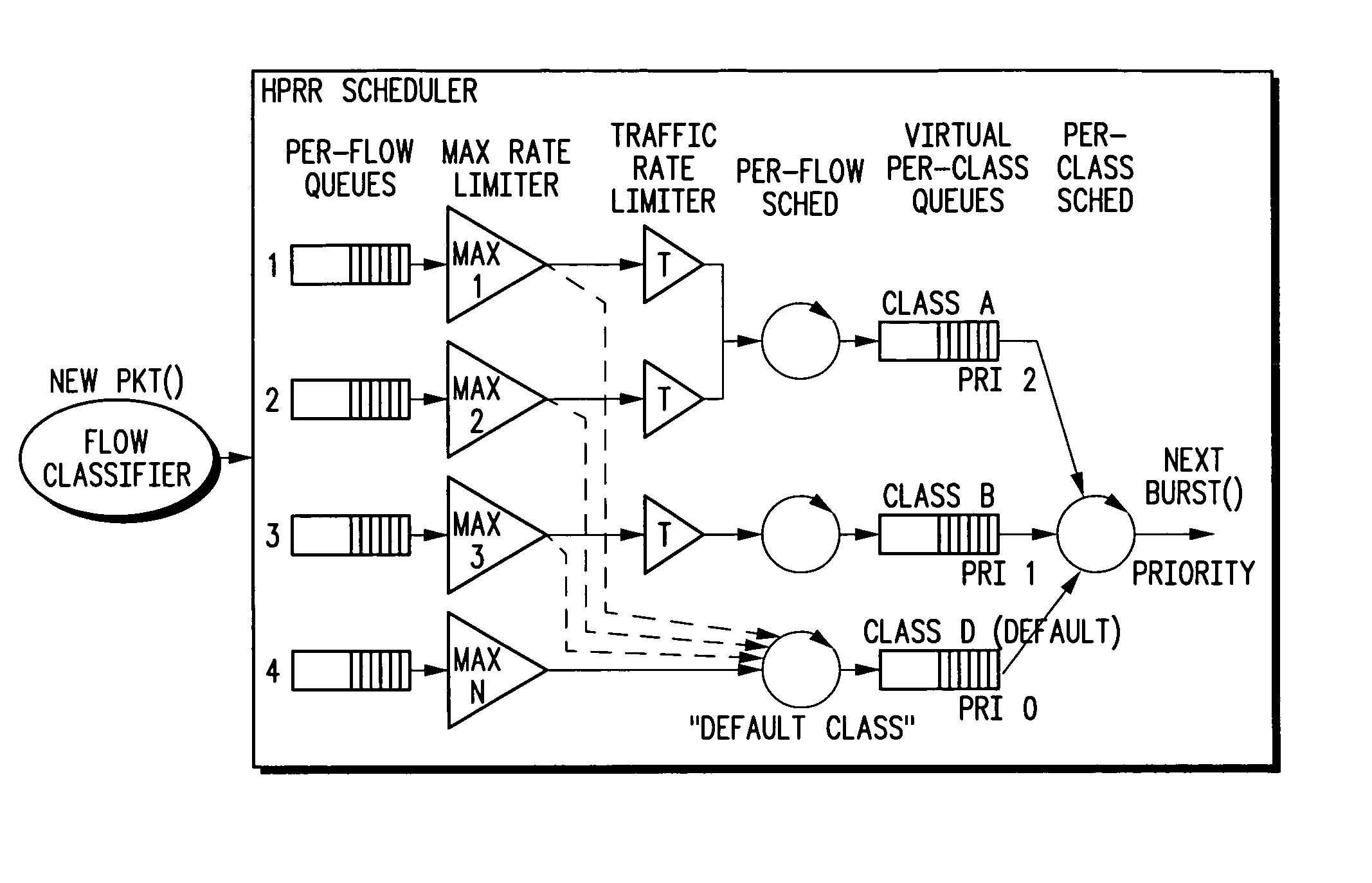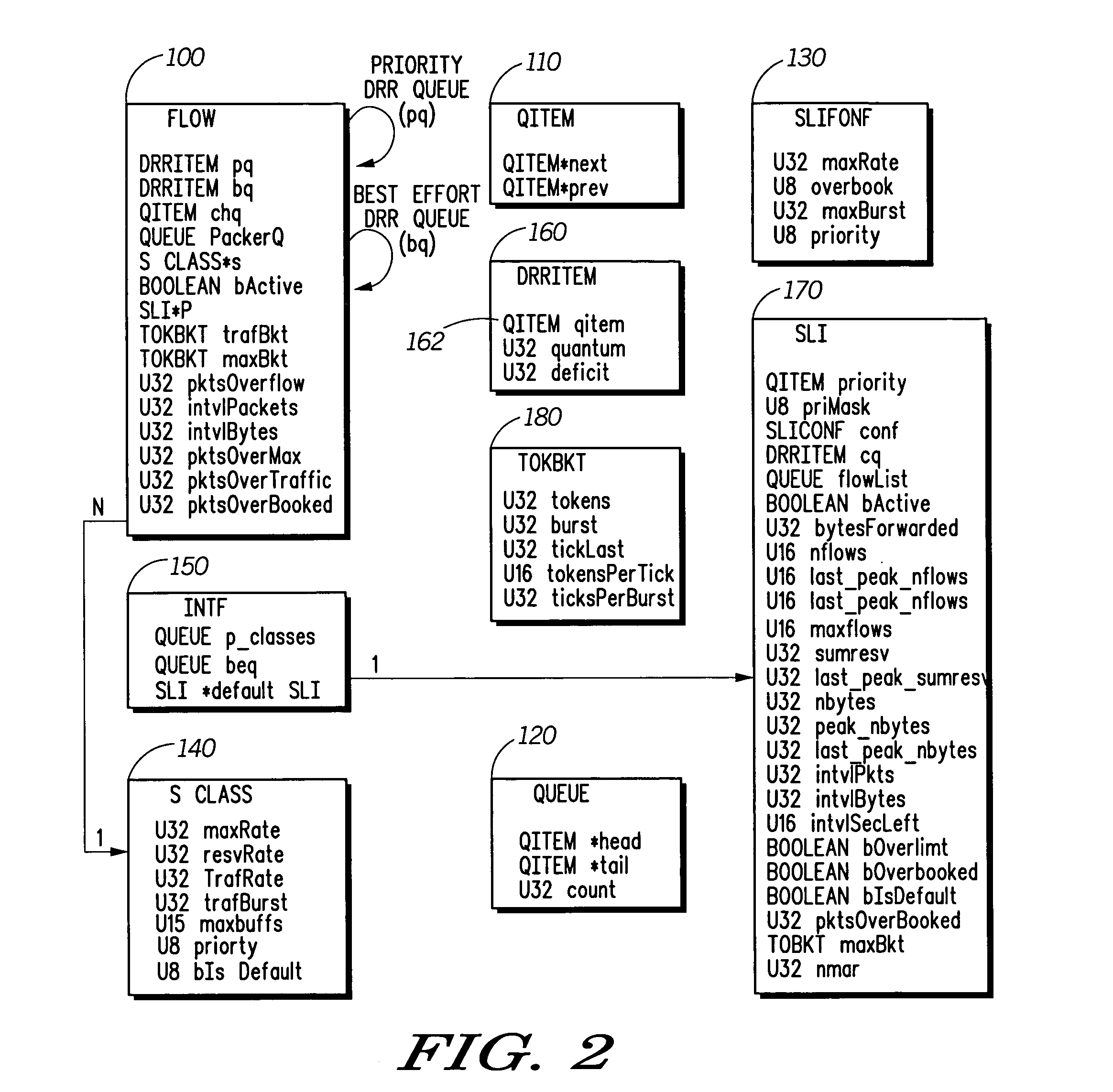Hierarchical prioritized round robin (HPRR) scheduling
a scheduling and data technology, applied in the field of computer networks, can solve the problems of inability to compete with other best-effort flows, single-level wfq methods suffer from the problem of overbooking, and cannot protect the instantaneous loss of bandwidth to underlimit classes, so as to avoid the maintenance of divide operations and log n of an ordered queue, and achieve the effect of simple and effective algorithm
- Summary
- Abstract
- Description
- Claims
- Application Information
AI Technical Summary
Benefits of technology
Problems solved by technology
Method used
Image
Examples
Embodiment Construction
[0028]FIG. 1 is a part-schematic flow diagram of a hierarchical prioritized round robin scheduling method according to principles of the invention. The present invention discloses a method and apparatus for scheduling the transmission of packets onto a data transmission link. Packets intended to be transmitted on a transmission link are given to a scheduler, which enqueues the packets and reorders the packets if necessary to meet pre-determined criteria.
[0029]The scheduling method and apparatus (referred to as the “scheduler”) herein described involves a combination of per-flow queuing with a prioritized service that limits both the maximum burst at each priority level as well as the bandwidth fraction on a per-priority level basis. The present invention combines key aspects of both Weighted Fair Queuing (WFQ) and Class Based Queuing (CBQ) packet scheduling methods. Further, an improved Deficit Round Robin service method is included in the present scheduling method and apparatus. Th...
PUM
 Login to View More
Login to View More Abstract
Description
Claims
Application Information
 Login to View More
Login to View More - R&D
- Intellectual Property
- Life Sciences
- Materials
- Tech Scout
- Unparalleled Data Quality
- Higher Quality Content
- 60% Fewer Hallucinations
Browse by: Latest US Patents, China's latest patents, Technical Efficacy Thesaurus, Application Domain, Technology Topic, Popular Technical Reports.
© 2025 PatSnap. All rights reserved.Legal|Privacy policy|Modern Slavery Act Transparency Statement|Sitemap|About US| Contact US: help@patsnap.com



